
Here are photos of the Nagoya venue in Current.
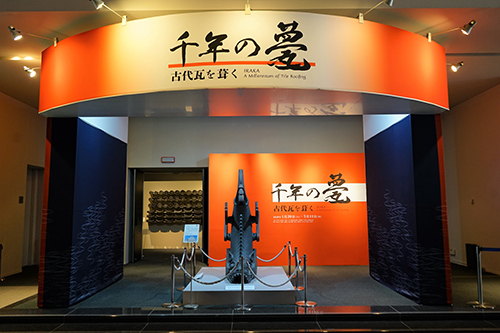
The "Sanshu Tile" corner, which was not available at the Kobe venue, has been added to the event since January 20 (Sat).
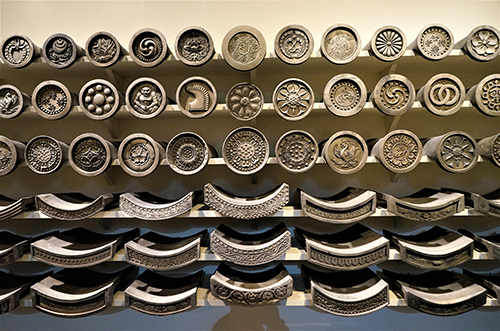
"Kawara Mandala" welcomes you at the front entrance. Please enjoy the patterns of various tiles that decorate the eaves, such as lotus flowers, character tiles, wind wisteria, phoenixes, grape arabesques, etc.
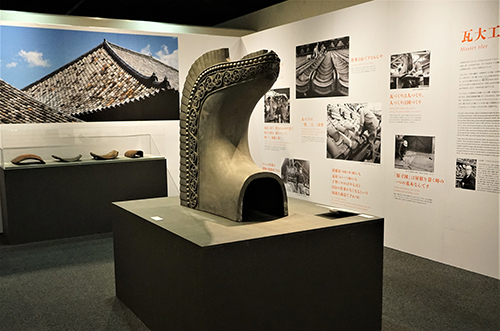
This is the "Thousand Years of Iraki (History of tiles)" corner. Introduces the transition of tiles from Asuka to the Edo period from the relationship with architecture. In the center stage is the Shibi (1/2 of the actual size) of the Kondo of Kofuku-ji Temple, and in the back is the roof tiles of Gangoji Temple, 1400 years ago (Asuka period), which was on the roof until very recently. In addition, the spirit of tile carpenter Kiyoichi Yamamoto as a tile craftsman is introduced in words and photographs.
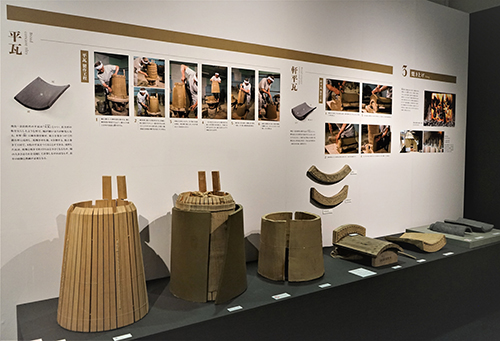
Next is the "Making Ancient Tile" corner. Tools and videos explain the molding process of raw materials from soil to round tiles, flat tiles, eaves round tiles, and eaves flat tiles.
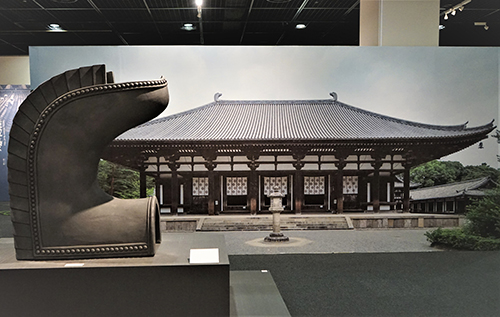
In the "Making Ancient Tile" section, Shibi (real-size) of the Kondo of Toshodaiji Temple is also displayed. It is usually at the top of the roof and rarely seen at the height of your eyes, so please take a look at this opportunity.
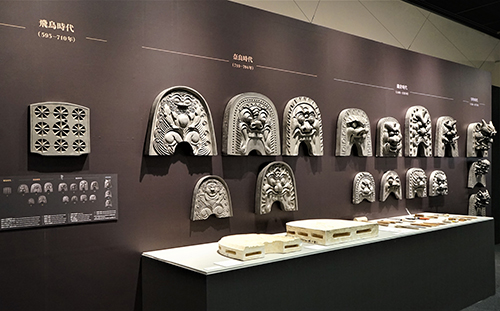
This is the "onigawara" corner. onigawara is exhibited according to the period between Asuka and Muromachi, so that you can see the transition of onigawara at a glance. The exhibition stand has a plaster shape that makes ancient onigawara and tools used by modern demon masters.
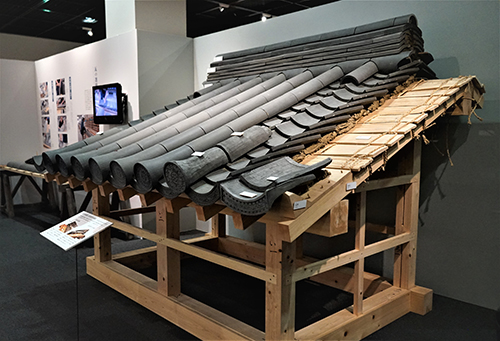
This is a corner where you can use the old roof tiles. The photo shows a roof model (real size). It is a real-sized tile, and the right side is a Nara period roof, and the left side is a modern roof. The difference between the two is whether there is a roofing soil or not. Please compare it to the venue.
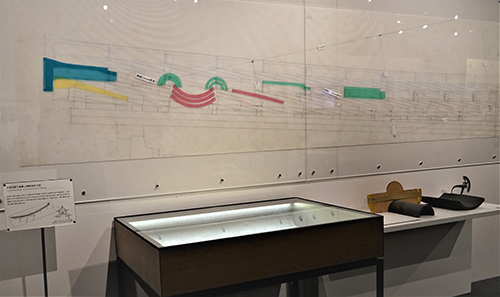
This is the original picture of the tile roof. The original size drawing is a drawing drawn with the size of the actual tiles in order to examine how the tiles fit into the roof. The cross section, elevation, and side of the tile are all drawn on a single sheet. In the case, a template for drawing a full-scale picture is displayed.
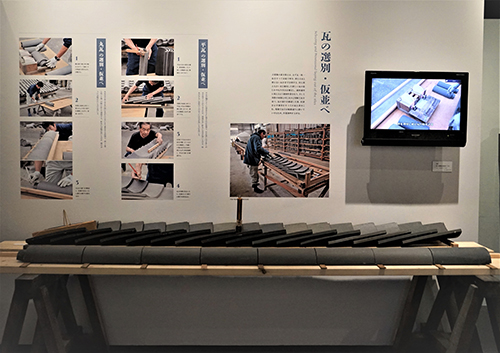
This is a temporary display of tiles. The tiles are pottery, so the curvature differs between old tiles and new tiles. Therefore, before roofing the tiles, we will do the work of roofing in advance. On the opposite side of this corner, the process of roofing tiles on the roof is introduced with tools, panels, and images.
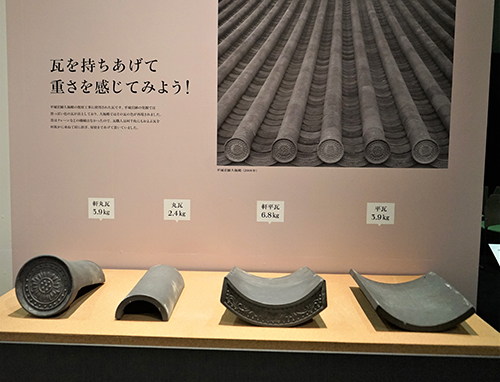
Finally, take up the actual tiles and feel the weight. The same roof tiles used for Daigokuden, the site of Heijogu Shrine, are on display. The eaves flat roof is 6.8 kilograms!
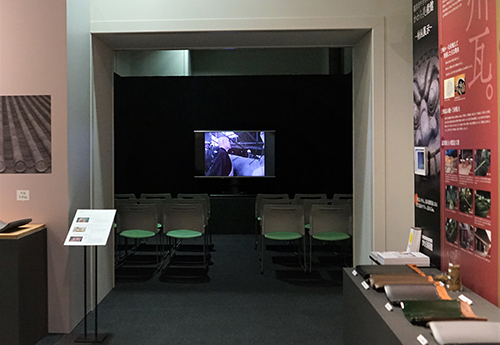
This is the video corner. "Thousand Years of Iraki; Making Ancient Tile (Produced by Takenaka Carpentry Tools Museum, 21 minutes)" "Mans who challenged the skills of Toshodaiji Temple Kondo-Tenpyo (Produced by TBS, 24 minutes)" and "Osamu Daibutsuden; Records of 7 years (Produced by Asahi Broadcasting, 24 minutes)". In particular, "Daibutsuden Osamu Cover; Records of 7 Years" is a valuable video that can only be seen here, so don't miss it!
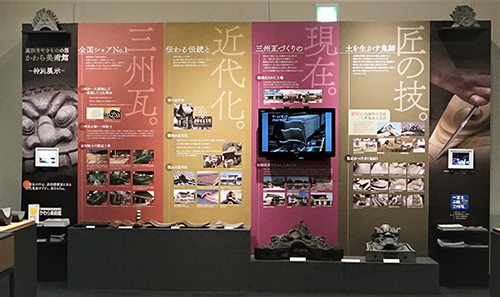
Aichi Prefecture is a production area of Sanshu tiles. To commemorate the event held in Nagoya, we have set up a "Sanshu Tile" corner. With the cooperation of the Takahama City Yakimono no Satokawa Museum of Art, we introduce the history of Sanshu tiles, modernization, present, and the skills of Onishi.
The Nagoya venue is until March 11th (Sun). This exhibition "Thousand Years of Iraki-Roofing Ancient Tiles-" will end at this venue. If you missed the Tokyo venue or Kobe venue, or if you want to see it again, why not visit the Nagoya venue?
◎As a related event, a demonstration of onigawara production by a demon master from the southern part of Nishi Mikawa will be held. No application is required. Please join us.
Date and time: ①January 27 (Sat), 2 January 28 (Sun),
③From 13:30 to 15:30 on March 4 (Sun)
Venue: Toyota Commemorative Museum of Industry and Technology Hall A
Organizer: Kawara Museum of Takahama City, a Hometown of Ceramics
Click here for details (Leaflet PDF)
Copyright 2017 TAKENAKA CARPENTRY TOOLS MUSEUM All rights reserved.






